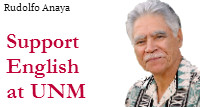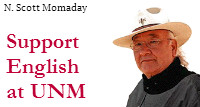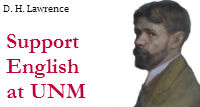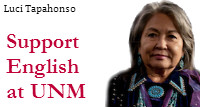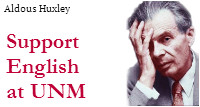Writer's Portfolio: Presenting the Professional You
This information is taken from the chapter "The Writer's Portfolio: Presenting the Professional You" in Professional Writing: A Guide to Successful Careers, written and edited by Scott P. Sanders and G. Jeanne Harris.
This page (c) 1992 by the Professional Writing Program of the Department of English Language and Literature at the University of New Mexico. All rights reserved.
This translation was presented as a web page by a team of students from the Spring 1998 English 290 class at the University of New Mexico, and was last updated in 2016.
Table of Contents
- Introduction
- What Is a Portfolio?
- Selecting a Cover
- When Would I Use a Portfolio?
- What's In a Portfolio
- Quantity, Quality, and Variety
- Presenting the Professional You
Introduction
No one will ask to see your portfolio when you apply for a job. And that is all the more reason why you should have one.
A professional portfolio of your writing--a presentation piece designed to display your talents as a professional communicator--will set you apart from the many other bachelor's degree holders who will present resumes, letters of recommendation, and perhaps dusty transcripts listing hours of coursework when they apply for that job you want. Only you will have a portfolio, and it just might get you that job.
Your portfolio presents your work--the professional you--displayed for all the world to see, right there on the printed page. The writer's portfolio gives employers a tangible reason to take you seriously as a professional, most importantly because the portfolio is a special presentation. It shows that you take yourself, and your writing, seriously as a professional.
What is a Portfolio?
The writer's portfolio is a collection of writing gathered in a display vehicle, usually a simple three-ring binder. The concept is borrowed from the fine arts. Painters, sculptors, and other visual artists have portfolios that display photographic slides of their work. Galleries want to see an artist's portfolio before deciding whether or not to show the artist's work. "Show me what you've done," curators ask.
Similarly, journalists will fill manila folders or envelopes with "clips," scissored samples of their published articles cut from newspapers and magazines in which they've published. When journalists apply for jobs, employers say, "Show me your clips." And out comes the folder, the journalist's portfolio, stuffed with its confetti sampling of prose.
A professional writer's portfolio is similar to an artist's, more similar still to a journalist's. But it differs from both in significant ways.
Selecting a Cover
Your portfolio of writing must be collected in something; it has to be more than a stack of papers. The minimal portfolio is a manila envelope or folder, but neither of those make a very professional presentation. Probably the best vehicle is a simple three-ring binder.
Choose a binder that reflects your sense of yourself. It might be blue canvas: traditional, informal, and classroom-like. It might be brown suede: more formal, less classroom-like. Or it might be somewhere in between. Don't spend a lot of time on this choice. If you plan to interview in blue jeans, don't pick an overly formal binder. If, as is more likely, you will interview in clothing that is more formal than what you wear to class, pick a more formal binder.
The three-ring binder allows you to adapt the contents of the portfolio to suit the differing needs of your audience. Each potential employer is a different audience. Buy pocket-dividers. Dividers allow you to classify your writing and to include or exclude particular documents for particular job interviews. Choose a binder that has pockets in the front and in the back. Those pockets will come in handy.
When Would I Use a Portfolio?
The portfolio goes with you to the interview. It is too bulky to mail with an application letter, too long to list its contents as part of your resume. But don't hide it in the first phases of the job search. Your resume might say at the bottom, "Portfolio of Writing Samples Available on Request." Your job application letter might refer to your portfolio. Mention that a copy of that brochure you wrote last summer is in your portfolio. Offer to bring the portfolio with you when you come to the job interview that your application letter seeks.
One key use for the portfolio may be as a means of directing a job interview. Job interviews are nerve wracking. You will be nervous, and so, most likely, will be your interviewer. A portfolio can be a tool to help you maintain control and remain focused. Use your portfolio to keep an interviewer's attention on your accomplishments as a professional communicator.
Show the interviewer the document(s) you produced in an internship or a summer job. Show the interviewer the report that earned you an "A" in your documentation class. Let your work and its solid presence do the talking when you're too tired or too nervous to think of something to say.
If you're just starting, you probably won't have that much work to choose from. But even if the specific documents in your portfolio aren't all that impressive taken one at a time, assembling a portfolio in a thoughtfully crafted presentation is itself an impressive professional communication accomplishment.
The key is an effective overall presentation. The portfolio itself, considered entirely apart from its contents, will make a strong impression and go a long way toward demonstrating to an employer that you have valuable skills as a communicator.
What's In a Portfolio?
OK. You've got the three-ring binder. Now what?
The first page of a typical professional writing portfolio is a simple title page: "Portfolio of Jocelyn Warnock," for example, printed one-third of the way down the page in large type or allcaps, boldfaced or otherwise highlighted to fill up the page appropriately.
Follow the title page with your resume. This can be either the same one-page resume you included with your job application letter or a longer, professional resume that offers more detail. Refer to any of the numerous books on the subject for specific advice on how to prepare a resume.
Consider this: be sure that your skills jump off of the page at the interviewer. What you did is more important than where or when you did something. And if you're a writer, emphasize the writing you did on the job--whatever the job might have been.
In the front pocket of the binder place copies of your resume and copies of "Selections from the Portfolio of . . . ," a five to seven page, stapled, photocopied sampling of key pages from your portfolio. Remember, your complete portfolio should never leave your sight. But your resume and the "Selections" make a nice hand-out to offer interviewers and others who might ask to "look at" your resume or your writing samples overnight. Photocopy the first pages (or pages with significant features, such as graphics or unusual--but good--layouts) of your best work.
After the resume include a brief table of contents on a separate sheet of paper that lists the sections of the portfolio. The sections of a professional writing portfolio are usually grouped by types of writing: technical writing, public information writing, freelance writing, and so on, much in the same way that the chapters of this book have been titled and grouped.
Then comes the bulk of the portfolio: samples of your work, separated into sections (using the pocket dividers mentioned above or some other method). At the back of the binder, you may wish to include copies of particularly glowing letters of recommendation or impressive commendations or certificates, either in a pocket divider or in the back cover pocket.
Often, classroom writing makes up a large portion of a recent graduate's portfolio. This is not a drawback. Of course, you should feature classroom work that mimics world-of-work writing: technical reports, editing assignments, layout and design projects, and other similar professional writing assignments. If possible, choose writing samples that mimic the writing performed on the job at the place where you are being interviewed.
But don't neglect your favorite essay on the English poet, John Milton. Or your best freshman English essay. No interviewer will read more than the first paragraph. If the first paragraph of your Milton essay can get the reader into your discussion with a clear sense of what you have to say and where the discussion is going, you can probably write clearly and effectively on just about anything.
The point is that you will not be evaluated on the content of your essay or the content of any other classroom writing that you present. A technical report from a technical writing class demonstrates familiarity with report writing and offers an example of your skills in the layout and design of a technical report. It usually does not demonstrate professional mastery of the content or subject of the report.
Similarly, what you know about Milton's poetry probably isn't vital to the job interviewer. But your ability to make Milton's poetry, or your opinion, accessible to a reader through your writing is valuable. In fact, that translational talent is exactly what the better employers of professional writers look for. Your portfolio takes classroom work out of the classroom and presents it in a professional context. Your ability to do this effectively demonstrates that you have the professional writer's talent for controlling context.
The prized contents of any portfolio are samples of professional, world-of-work writing. Include the brochure you did for your internship, or the set of instructions you wrote for training new docents the summer you worked as a volunteer at the museum. Both are world-of-work documents; both are equally important.
Remember, just as with your classroom writing, even the world-of-work document's contents are probably not as important as the communication value of the documents, which demonstrates your ability to present information clearly and effectively on a variety of topics to varying, but specific, audiences.
If you are applying to be a technical writer and you have an actual, world-of-work technical report, place it prominently in your portfolio. It is not necessary to present the entire document. If the report is more than ten pages long, photocopy the first page or two. Preferably, include a page with your name listed as an author, or a page with a unique layout demonstrating your ability to mix text and graphics.
Quality, Quantity, and Variety
Quality is the most important consideration; quantity is the least important. Variety is important more for entry-level applicants and becomes less important as the writer specializes in a particular genre. Three documents might fill a first portfolio. Too many documents can dilute the impression that any one document might make. You want to make a strong impression; include only your best work.
Variety may mean a variety of genres. Pieces of technical writing, essays, a brochure, even if all of these documents are classroom writing samples, can comprise an effective portfolio. Remember, to an employer a sociology paper and a history paper are the same genre: classroom writing. What you understand as variety should reflect your understanding of your audience's sense of variety.
The portfolio made with a three-ring binder and pocket dividers allows you to change documents to suit individual job interviews. It also allows you to change your portfolio as your experience changes. In many cases, the classroom writing is the first to go, replaced by world-of-work writing in the particular genre previously demonstrated by classroom work.
Presenting the Professional You
Before you can present the professional you, you must first recognize who you are as a professional. Often, the portfolio's initial importance is that it forces you to take yourself and your writing seriously and to put it on display for the world--not just the classroom instructor--to see.
The portfolio itself is a non-classroom, world-of-work document. You will be the first to judge its effectiveness. And that judgment may be the first professional evaluation you will make. Put together a portfolio. Take the lead in discovering and presenting the professional you.
